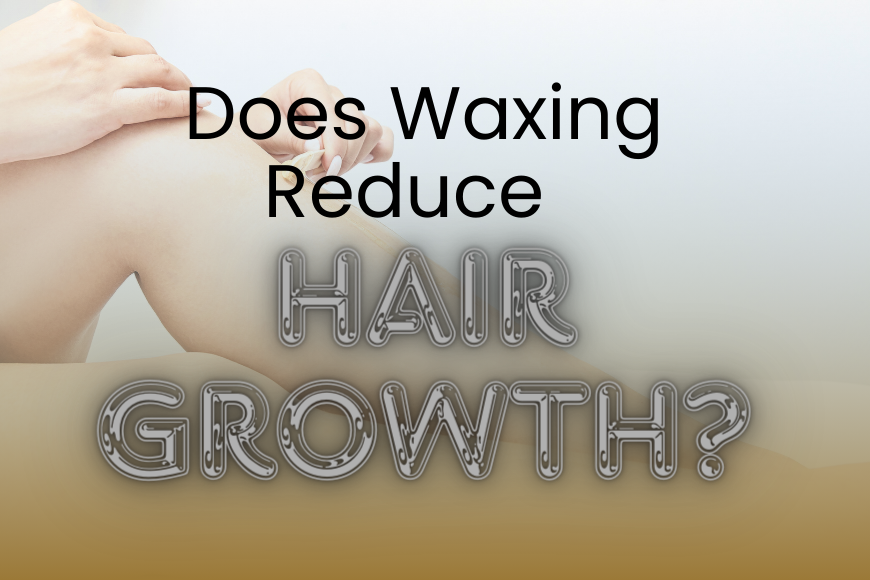In the quest for smooth, flawless skin, the question often arises: does Brazilian waxing really reduce hair growth? While many aestheticians tout its effectiveness, there’s often confusion about the true impact of Brazilian waxing on hair growth patterns. Contrary to common belief, Brazilian waxing doesn’t necessarily make hair grow back thicker. In fact, there are numerous benefits to Brazilian waxing that go beyond hair removal alone. From reducing ingrown hairs to promoting smoother skin texture, Brazilian waxing offers a range of advantages for those seeking long-lasting results. Join us as we delve into the fascinating truths behind Brazilian waxing and uncover the secrets to achieving stunning skin.
Does Brazilian waxing reduce hair growth?
Certainly! Many people wonder whether Brazilian waxing truly affects hair growth. It’s a common question with varied answers depending on who you ask. Estheticians often offer conflicting viewpoints, some claiming Brazilian waxing can reduce hair growth while others argue it leads to thicker regrowth. This discrepancy can leave people confused about the actual impact of Brazilian waxing on hair growth.
Waxing is widely regarded as a safe and cost-effective method for achieving smooth skin. However, its effects on hair growth are not universally consistent. In this article, we aim to shed light on the relationship between Brazilian waxing and hair growth, debunking misconceptions and discussing potential risks associated with excessive Brazilian waxing. Let’s delve into the details.
Does Waxing Reduce Hair Growth?[Facts Explained]
Yes, Waxing reduces hair growth and provides a safe and effective method for removing unwanted hair from the roots, offering longer-lasting smoothness compared to shaving. Typically, you can expect to enjoy hair-free skin for anywhere from 3 to 6 weeks before needing another session.
However, whether Brazilian waxing completely halts hair growth varies based on individual factors such as hair texture, health conditions, hormones, genetics, and diet.
While many people experience reduced hair growth over time with regular Brazilian waxing, it’s not an instant process. Consistency is key to achieving long-lasting results. Avoiding shaving between Brazilian waxing appointments is crucial, as it can counteract the desired effects by stimulating hair regrowth.
How Many Times Do I Have To Wax To Have Reduced Hair Growth?
Our hard wax is crafted to effectively eliminate hair from the roots, giving you the benefit of silky-smooth skin for a period ranging from 3 to 6 weeks. As hair regrowth occurs, it must push through the skin, prolonging the time between sessions compared to shaving. Additionally, you can enhance the longevity of your Brazilian waxing results by incorporating aftercare products into your routine.
Can Hair Get Thinner Over Time With Waxing?
Yes, hair can get thinner over time with Brazilian waxing. Repeated Brazilian waxing can weaken and damage hair follicles. Over time, this can lead to a reduction in the size and capacity of the follicle, causing the hair to grow back finer, thinner, and sometimes less densely.
Consistent Brazilian waxing can lead to a phenomenon known as “miniaturization” of the hair. The repeated trauma to the follicle can eventually cause some follicles to stop producing hair altogether, leading to reduced hair growth in the waxed area.
Keep in mind that, the extent to which hair becomes thinner varies from person to person. Genetics, hormonal factors, and the skill of the Brazilian waxing technique can all influence the outcome.
While it’s challenging to pinpoint the exact number of sessions required to noticeably reduce hair growth, investing in Brazilian waxing as part of your self-care regimen is undoubtedly worthwhile.
What Are Some Common Myths About Waxing?
If you have concerns about the risks of Brazilian waxing, rest assured there’s nothing to worry about. Let’s clear up some common myths about Brazilian waxing to put your mind at ease:
Your Skin May Become More Sensitive and Irritable
Waxing too frequently can lead to irritation and increased skin sensitivity. However, getting waxed every 4 weeks is both safe and recommended. As long as you follow proper pre- and post-wax care, this shouldn’t be an issue. If you notice any skin irritation in the area you plan to wax, it’s best to rebook your appointment.
Over Waxing May Lead to Darker Skin Due to Trauma
Waxing more than once every 4 weeks is considered overBrazilian waxing, which can cause dark spots due to increased skin sensitivity. By adhering to a proper Brazilian waxing routine, you can avoid this issue. If dark spots do occur, don’t worry! You can treat the area safely with a skin brightening product and an exfoliant.
Excess Waxing Can Cause a Loss of Skin Elasticity
There’s a myth that excessive Brazilian waxing leads to a loss of skin elasticity, causing sagging skin. In reality, sagging is typically due to aging, diet, or decreased collagen production, not Brazilian waxing. unharmed.
In fact, Brazilian waxing can enhance the appearance of your skin by removing the topmost layer along with the hair, effectively exfoliating and revealing bright new skin underneath.
Waxing Too Soon Can Cause More Ingrown Hairs
Waxing too soon doesn’t allow your hair to grow long enough for effective removal. Your hair should be about ¼ of an inch before Brazilian waxing. If it’s shorter, the esthetician won’t be able to pull it from the root, which can cause hair to break at the surface and result in uneven regrowth.
Waxing too early also increases the risk of ingrown hairs, especially if you have coarse or curly hair. Fortunately, there’s an easy way to prevent this.
Exfoliation is key to achieving the best Brazilian waxing results. By exfoliating before and after your wax, you can prevent and treat ingrown hairs, making your skin smoother. It also makes hair removal easier and less painful during your next wax. You’ll find exfoliation tips and products throughout our website because it’s essential for optimal Brazilian waxing results.
Does Waxing Reduce Ingrown Hairs?
Yes, Brazilian waxing can help reduce ingrown hairs when done properly. Waxing removes hair from the root, which means the hair grows back with a finer tip and more slowly compared to shaving, reducing the chances of it curling back into the skin and becoming ingrown.
Additionally, Brazilian waxing exfoliates the skin by removing dead skin cells along with the hair, helping to keep the hair follicles clear and reducing the risk of hairs becoming trapped under the skin.
To maximize the benefits of Brazilian waxing and prevent ingrown hairs, it’s important to follow some best practices.
Ensure your hair is about ¼ inch long before Brazilian waxing, as hair that’s too short may not be effectively removed from the root, increasing the risk of breakage and ingrown hairs.
Regular exfoliation before and after Brazilian waxing is crucial; it helps remove dead skin cells and allows hairs to grow out more easily.
Use a gentle scrub or exfoliating mitt a couple of times a week. Keeping your skin hydrated through regular moisturization maintains its elasticity and reduces the likelihood of hair getting trapped under dry, flaky skin.
After Brazilian waxing, wearing loose clothing can prevent friction and irritation, which contribute to the development of ingrown hairs. Additionally, professional Brazilian waxing services by trained aestheticians ensure proper technique and hygiene, further reducing the risk of ingrown hairs.
Conclusion
Waxing is an affordable method for achieving long-term smooth, supple skin. With a consistent schedule, it’s a safe and effective way to reduce hair growth over time.
The more regularly you wax, the longer you’ll enjoy its benefits. We recommend scheduling your appointments every 3 to 6 weeks to maintain optimal results.



